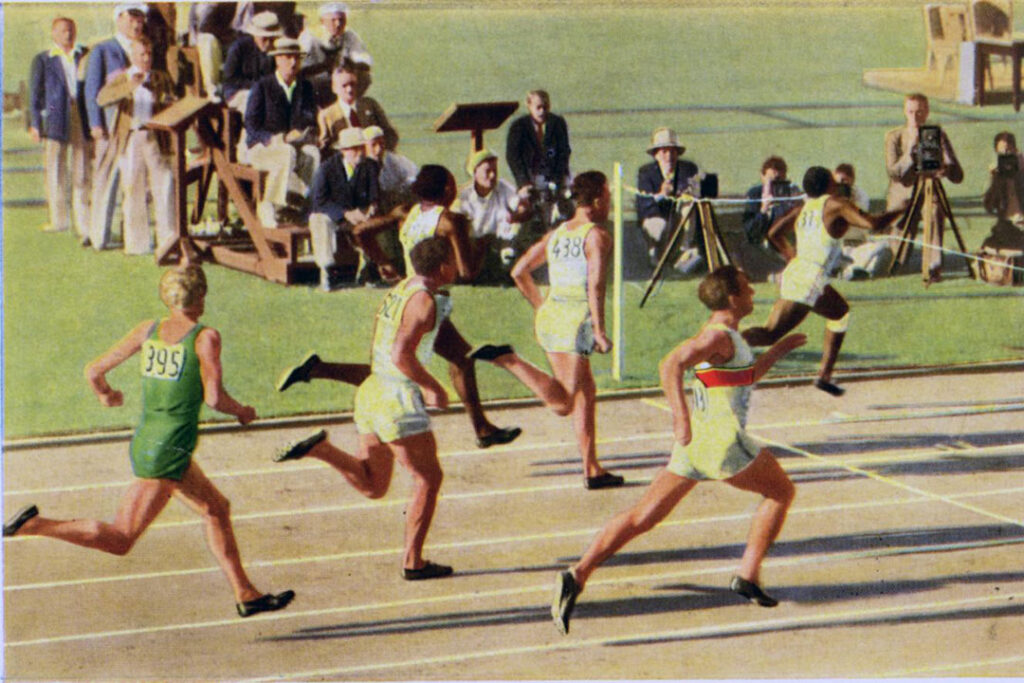Every name has a story
Historical records of African American students, their living situations, their organizations, and their overall experiences on the early U-M campus are sadly rare. So, in 2022, the Bentley Historical Library launched the African American Student Project, a long-term effort to build a comprehensive database that lists the names and years of attendance of every African American student who enrolled at the University between 1853-1956. University historians encourage users to explore the database and contribute relevant assets to this remarkable archive. This slideshow takes its name from the project’s story archive; all images are courtesy of U-M’s Bentley Historical Library. (Click on an image to enlarge.)
-
Making connections
Through an exhaustive and ongoing process of research and verification, the African American Student Project has identified almost 6,000 individual names and collected information on hometowns, local addresses, years of attendance, membership in campus organizations, degrees, and fields of study. Learn more about where these students lived in Ann Arbor.
-
Of splendid ability
It is wrong to call Mary Henrietta Graham the first African American woman to attend U-M because she was, in fact, Canadian. She was admitted in fall 1876, and while little is known about her personal experience as a student, records show she would have seen a sea of nearly 1,100 white student faces, plus an all-white, all-male faculty at the time of her enrollment. Read more about Graham.
-
Strong as steel
In 1911, Cornelius L. Henderson became the second African American to earn an engineering degree from U-M. He was a pioneering steel engineer and architect who helped construct two of the major Great Lakes crossings between the United States and Canada: The Ambassador Bridge and the Detroit-Windsor Tunnel. Read more about Henderson.
-
The Negro-Caucasian Club
Founded in the 1920s, the Negro-Caucasian Club’s aim was “to work for a better understanding between the races and for the abolition of discrimination against Negroes.” Members invited leading speakers to campus, including the activist and writer W.E.B. DuBois, a founder of the National Association for the Advancement of Colored People, and the novelist Jean Toomer. Read more about the Negro-Caucasian Club.
-
Baseball’s barrier breaker
Before Jackie Robinson, there was Moses Fleetwood Walker, who would use the racism and discrimination he faced in baseball to fuel a career as an editor, author, and political advocate for Black rights. In this photo of Michigan’s 1882 baseball team, Walker is pictured, front row, third from right. Read more about Walker.
-
A lifelong educator
Even though education pioneer Sophia Holley Ellis was used to being told “you can’t,” she earned three Michigan degrees between 1949-64. As a gifted teacher, she once wrote, “Monetary compensation for my teaching services cannot be even closely equated with the personal satisfaction I have been afforded by knowing that I have been instrumental in bringing about positive changes in the lives of hundreds of people.” Read more about Ellis.
-
The dignity of man
When he graduated in 1934, Paul Cornely was the first Black man in the country with a doctorate in public health. He spent 39 years at Howard University where he served as department chair, directed the student health service, and became the medical director of Freedmen’s Hospital, Howard’s teaching hospital that served the local African American community. Read more about Cornely.
-
Detroiter and Olympian Eddie Tolan
Eddie Tolan made history and broke barriers as a Black athlete. Today, his medals and a pair of his shoes are on display at the Charles H. Wright Museum of African American History in Detroit, and a field is named in his honor. In this vintage postcard, Tolan wins the gold in the 200-meter race at the 1932 Olympics. Read more about Tolan.
-
An integrated life
History alumnus Lyman T. Johnson was the grandson of four former slaves. His father graduated from college and worked as the principal of a Black school. He taught his son to see education as a tool for racial advancement. Johnson responded by integrating the University of Kentucky in 1949 — five years before Brown v. Board of Education. Read more about Johnson.
-
African American student housing in Ann Arbor
A two-story house at 1017 Catherine St. near Glen Avenue provided lodging to African American students for more than 50 years. It is the founding site of the Alpha Phi Alpha fraternity, the first African American Greek organization at U-M, in 1909. Read more about the history of Black housing at U-M.












Ashley Anderson - 2011
I’m glad these students’ stories were brought to the forefront for others to enjoy.
Reply